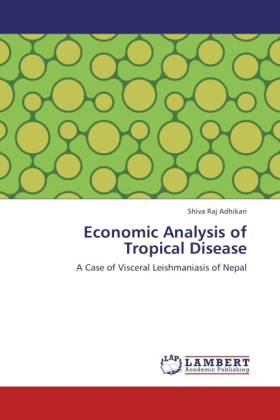
- Afhalen na 1 uur in een winkel met voorraad
- Gratis thuislevering in België vanaf € 30
- Ruim aanbod met 7 miljoen producten
- Afhalen na 1 uur in een winkel met voorraad
- Gratis thuislevering in België vanaf € 30
- Ruim aanbod met 7 miljoen producten
Zoeken
Economic Analysis of Tropical Disease
A Case of Visceral Leishmaniasis of Nepal
Shiva Raj Adhikari
Paperback | Engels
€ 92,45
+ 184 punten
Omschrijving
This book contributes to the literatures by measuring in quantitative terms the potential effects of poverty-alleviation programs on the incidence of disease; exploring road map of decision making process for health seeking; examining utilization patterns of health services based on first consultation and factor influencing multiple consultations to the providers. For empirical analysis, the sophisticated statistical tools are applied to recently collected data in Nepal. The study focuses on Visceral Leishmaniasis (VL) - a neglected tropical disease, also known as disease of poor. The results of demand analysis suggest that absolute poor are highly price sensitive, although health services are provided free of charge at the public hospitals. Based on empirical model, this study has also explored the implication of introducing demand side financing and better access to information on the utilization of public hospitals. A holistic approach rather than traditional disease-centered approach can break the links between poverty and VL; and expansion of VL care in public and private providers and better access to information can help to control of VL in Nepal.
Specificaties
Betrokkenen
- Auteur(s):
- Uitgeverij:
Inhoud
- Aantal bladzijden:
- 184
- Taal:
- Engels
Eigenschappen
- Productcode (EAN):
- 9783845470856
- Verschijningsdatum:
- 22/09/2011
- Uitvoering:
- Paperback
- Afmetingen:
- 152 mm x 229 mm
- Gewicht:
- 277 g

Alleen bij Standaard Boekhandel
+ 184 punten op je klantenkaart van Standaard Boekhandel
Beoordelingen
We publiceren alleen reviews die voldoen aan de voorwaarden voor reviews. Bekijk onze voorwaarden voor reviews.








